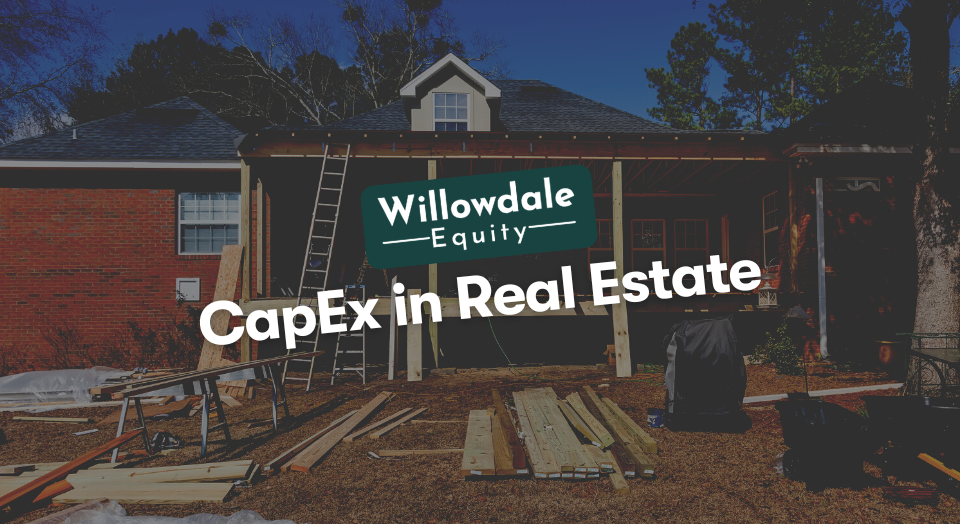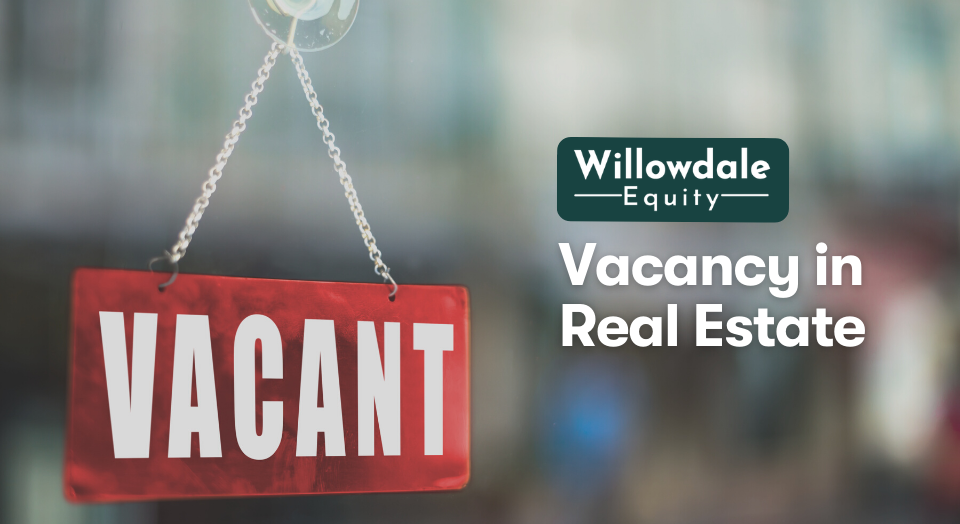
What Does CapEx Mean in Real Estate?
This article is part of our guide on passive investing in multifamily via syndication, available here.
Investment in real estate nearly always involves some level of capital expenditure. You should anticipate that at some point, you’ll need to enhance value by expanding, making significant repairs, or replacing equipment and appliances unless you only buy already valued-added or newer vintage properties and hold them for a shorter holding period.
Understanding capital expenditures is essential for budgeting and accounting considerations regarding any real estate investment. In this article, we’ll break down what Capex in real estate entails, why a landlord would implement it at their property, and an explanation of depreciating capital expenditures.
Key Takeaways
-
Funds used by a business to acquire, upgrade, or maintain long-term physical assets to increase productivity or capacity are referred to as capital expenditures.
-
Long-term investments typically consist of tangible, immovable, non-consumable assets with a useful life of more than one fiscal period, such as real estate, machinery, or infrastructure.
-
Generally, an expense is seen as capital spending when the newly acquired item or investment increases the property’s long-term useful life.
What Does CapEx Mean in Real Estate?
Funds used by a business to acquire, upgrade, or maintain long-term physical assets to increase productivity or capacity are referred to as capital expenditures. Long-term investments typically consist of tangible, immovable, non-consumable assets with a useful life of more than one fiscal period, such as real estate, machinery, or infrastructure.
CapEx can be calculated using the formula below:
CapEx = PP&E + Current Depreciation
The change in property, plant, and equipment from one period to the next is referred to as PP&E. The differential is typically computed once a year.
So, what is the purpose of capital expenditures (Capex) in real estate? Real estate companies invest in, buy, remodel, and maintain tangible assets like buildings, technology, or equipment through capital expenditures (CapEx). Businesses frequently use CapEx to launch new initiatives or invest in real estate.
Capital expenditures are noted, or capitalized, on balance sheets as opposed to operational expenses, which are factored into your net operating income (NOI) calculation. Therefore, a capital expenditure is not charged on the monthly or yearly income statement. As a result, while figuring out a property’s capitalization rate, CapEx is likewise disregarded.
CapEx is generally used to broaden the scope and efficiency of business operations, ultimately adding financial value to the company.
Additionally, a product or service with a useful life of less than a year must be expensed on the financial statements and cannot be classified as capital expenditure (CapEx).
Let’s now understand capital expenditures in real estate through real-world examples.
Examples of CapEx Items in Real Estate

Numerous products and services are capital expenditures in the real estate industry. Generally, an expense is seen as capital spending when the newly acquired item or investment increases the property’s long-term useful life.
Examples of capital expenditures in real estate include the following:
- Roof replacement for the building
- Repairing the HVAC system for the entire building
- Putting into place a new building automation system
- Building out or renovating amenities
It’s crucial to remember that capital expenditure requires a sizable investment or project that is anticipated to lose value over time.
Contrary to ordinary repairs, capital expenditures (CapEx) do more than restore a property to its previous condition; instead, they dramatically improve its conditions or lengthen its lifespan.
Now that you understand what capital expenditure in real estate looks like, it’s time to discuss why a landlord would implement capital expenditures on their property.
Why Would a Landlord Implement CapEx at Their Property?
By making necessary improvements, capital expenditure in real estate provides a better quality experience for the tenant base while also allowing the landlord to charge more for rent and additional amenities, effectively increasing the property’s value.
Any experienced landlord knows that maintaining a rental property in good condition lowers vacancy, and luring and keeping tenants comes with recurring operating expenses. However, more significant capital expenditures may be necessary for commercial real estate, such as repairing a roof or HVAC system, remodeling an old kitchen or bathroom, or building a new deck or fence, to keep the rental revenue flowing in.
Even though these upgrades can be expensive, they can significantly affect the property’s value and capacity to find and keep good tenants who would be ready to pay a higher rent.
Additionally, tax depreciation on capital upgrades can partially offset their initial cost. But it’s essential to remember that Capex in real estate can require a substantial cash outlay. To ensure you don’t overleverage your capital, research and develop a specific budget before starting any major projects.
Another essential topic around capital expenditures is how to depreciate these improvements. We will discuss that next.
Depreciating Capital Expenditures
When it comes to commercial real estate, Capex refers to money spent by a business to purchase or improve tangible assets that cannot be deducted for tax purposes as current operating expenses.
These costs can go toward installing a new roof, making tenant upgrades, or constructing a parking lot. When an expenditure extends the service life of an existing capital asset or when it is an asset that has just been purchased, it is classified as capital spending in accounting terms.
An organization’s asset accounts initially grow as a result of capital expenditures. However, capital assets tend to depreciate once used and lose value throughout their useful life.
Depending on the type of improvement, capital expenses may be depreciated over the improvement’s service life at a different rate than the real estate as a whole. Capital investments are added to the property’s basis.
For instance, the value of the property (minus land value which the IRS states has an unlimited life) is often depreciated over 27.5 years for a residential property or building. In contrast, the price of a new appliance is usually depreciated over a five-year period.
The chart below shows examples of the depreciation schedule of some of the items at a given property.
Depreciation Schedule For Various Items | ||
5-Year Property | 15-Year Property | 27.5-Year Property |
Appliances | Asphalt Paving | Ceiling Finishes |
Lighting | Pavement Markings | Basement Excavation |
Cabinetry | Concrete Curbing and Paving | Cooling Generating Systems |
Countertop | Landscaping | Energy Supply |
Mailboxes | Site Signage | Exterior Windows |
Vinyl Floors and Base | Fencing | Domestic Water |
Telephone and Daa | Electrical Service/Distribution | |
Ceiling Fan | Exterior Doors | |
Building Signage | Exterior Walls | |
Cable TV System | Plumbing Fixtures | |
Special Purpose Electrical | Roof Construction & Coverings | |
Special Purpose Plumbing | Standard Foundations | |
We have covered all bases regarding what CapEx means in real estate. However, a few frequently asked questions (FAQs) about the definition of capital expenses in real estate are to be answered. That is what we will be doing next.
Frequently Asked Questions about the Definition of Capital Expenses in Real Estate
No. Rent and mortgage payments are examples of operating expenses.
In addition to ordinary maintenance costs and repairs, capital expenses for rentals often include money spent on enhancing or upgrading a property. Capital expenditures are typically made on technology, fixed company assets, and investment buildings.
Capital Expenses Real Estate - Conclusion
Owners of rental properties are constantly looking for ways to maintain their properties’ quality and draw in a desirable tenant base. Even while these improvements can often be pricey, CapEx or more costly repairs or enhancements may dramatically impact the property’s value.
Join the FREE 5-Day PASSIVE Real Estate Investing Crash Course to learn about CapEx and everything from A to Z about commercial multifamily real estate investing.
Sources:
- CFI, “Capital Expenditures”
- Leverage.com, “The Basics of CapEx in Real Estate”
Interested In Learning More About PASSIVE Real Estate Investing In Multifamily Properties?
Get Access to the FREE 5 Day PASSIVE Real Estate Investing Crash Course.
In this video crash course, you’ll learn everything you need to know from A to Z
about passive investing in multifamily real estate.
We’ll cover topics like earned income vs passive income, the tax advantages, why multifamily, inflation, how syndications work, and much much more!




